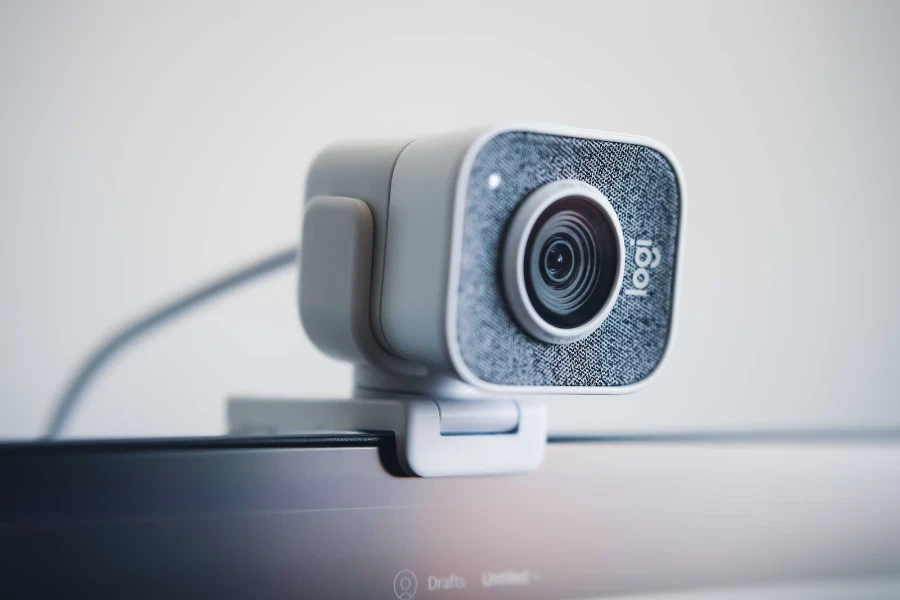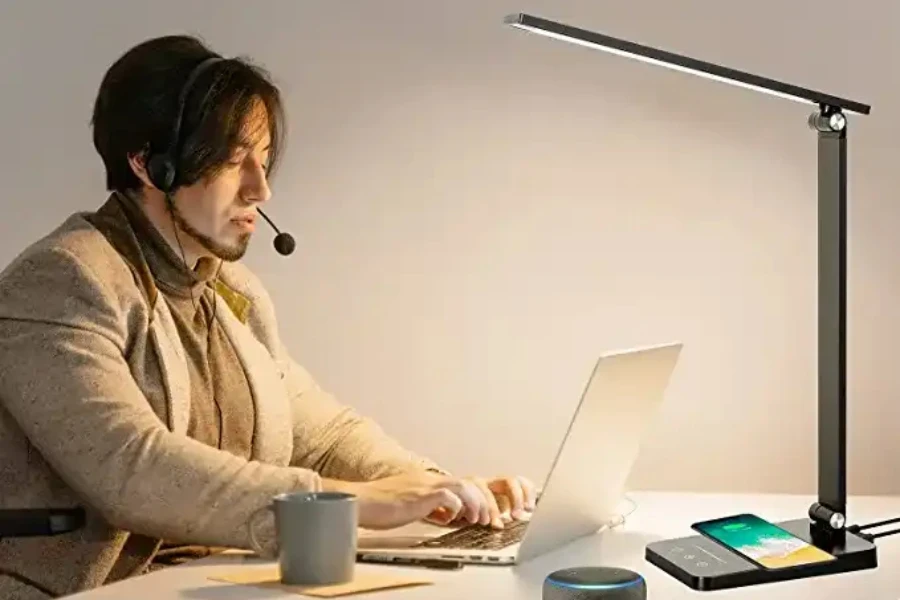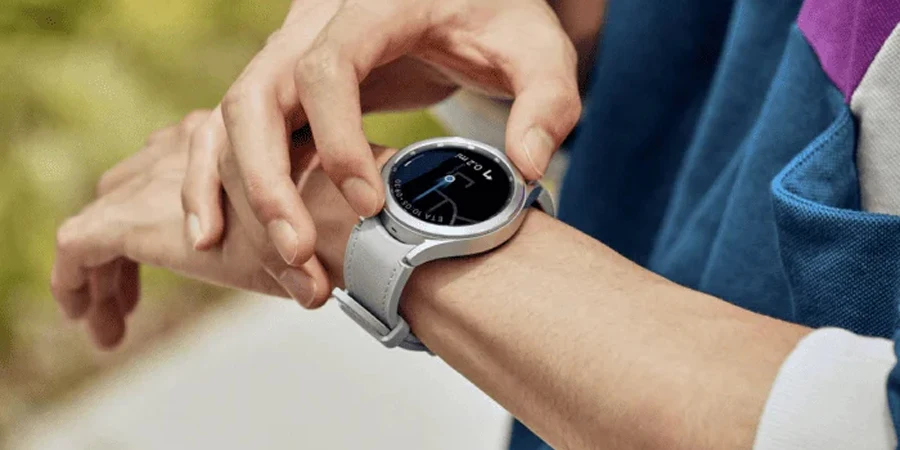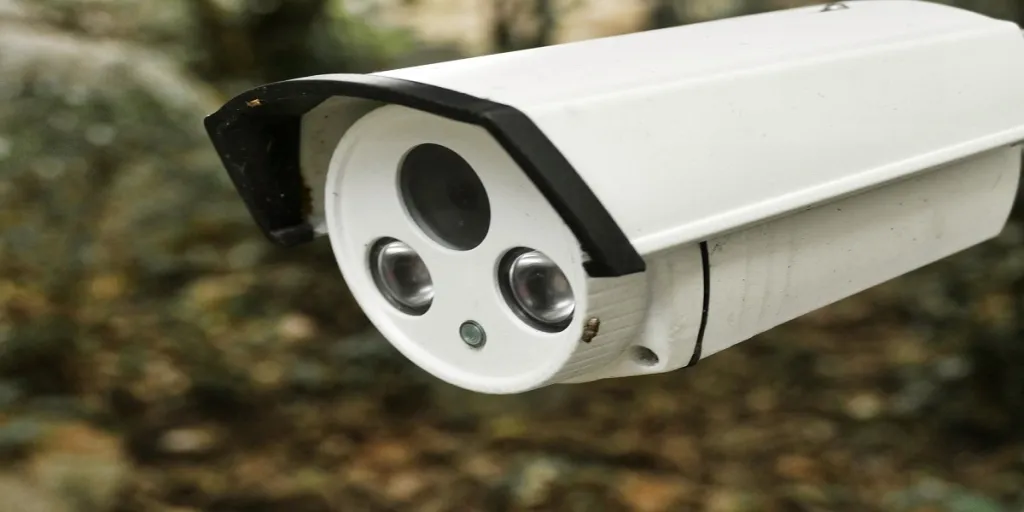According to Forbes, as of 2023, approximately 13% of full-time employees work from home, while 28% work a hybrid schedule which combines work-from-home and in-office work. They predict that by 2025, approximately 32.6 million Americans will work remotely, about 22% of workers. While these numbers may seem lower than anticipated, 98% of workers have expressed the desire to work remotely at least part of the time.
While not all companies are convinced that working from home is the best approach for workers, approximately 16% of companies are fully remote and operate without physical offices.
With remote work continuing to be prominent comes the importance of a well-equipped home office. Here, we will outline the current trends in home office technology and what consumers want to improve their home offices.
Table of Contents
The home office market
Ergonomic furniture and accessories
Advanced audio and video equipment
Conclusion
The home office market
The global office furniture market was US$ 54.24 billion in 2021 and is forecasted to reach US$ 85 billion in 2026. Moreover, PC sales are expected to grow at a compound annual growth rate (CAGR) of 3.3 percent over the next five years.
Ergonomic furniture and accessories
As remote work becomes more prevalent, ensuring ergonomic home offices is essential for the success of remote employees, as comfortable and efficient workspaces lead to better remote work outcomes. Not only does the comfort of an ergonomic home office setup increase productivity through improved focus, but it also reduces the risk of injuries like carpal tunnel syndrome, as well as reduces neck and back pain.
Let’s look at popular ergonomic furniture that people are seeking to upgrade their home offices:
1. Standing desks

An adjustable standing desk provides variability during the workday. People can choose the position that suits their tasks and comfort level best, leading to a more adaptable and personalized work environment which people love; according to Google Ads there are more than 450,000 monthly searches for standing desks.
Additionally, regular use of a standing desk can have long-term health benefits, such as improved cardiovascular health, reduced risk of weight-related issues, and a lower likelihood of developing chronic conditions associated with prolonged sitting.
Standing also promotes blood flow which can help with fatigue and can help improve people’s posture.
Types of standing desks:
Standing desks come in various types and configurations to suit different preferences, needs, and office setups. Here are some of the most common types of standing desks:
- Fixed standing desk: Fixed standing desks are stationary and do not have height-adjustment mechanisms. They are set at a fixed height, typically at standing desk height (around 42 inches). Users can’t switch between sitting and standing positions with this type of desk.
- Height-adjustable desk: Height-adjustable desks, also known as sit-stand desks, are the most versatile. They can be easily adjusted to different heights, allowing users to switch between sitting and standing positions as needed. There are two main types of height-adjustable desks:
- Manual adjustability: These desks are adjusted using a hand crank or manually lifting and lowering the desktop. They tend to be more affordable.
- Electric or motorized adjustability: These desks have an electric motor that raises and lowers the desk with the push of a button. They are more convenient but may be costlier.
- Desktop converters: Desktop converters, also known as desk risers or desk toppers, are designed to be placed on top of an existing desk or table. They provide a standing desk surface that can be raised or lowered to convert a standard desk into a sit-stand desk.
- Wall-mounted standing desk: Wall-mounted standing desks are attached to a wall and fold down when in use. They are ideal for smaller spaces where floor space is limited. Wall-mounted desks may have manual or motorized height adjustment options.
- Mobile standing desk: Mobile standing desks are equipped with wheels or casters, allowing users to move the desk easily to different locations within a workspace. They are often used in collaborative or flexible office environments.
2. Ergonomic chairs
Ergonomic desk chairs are designed to provide comfort and support while promoting good posture and reducing the risk of musculoskeletal issues.
There are various ergonomic desk chairs, each with unique features and benefits. Here are some common types:
- Task chairs: Task chairs are versatile and widely used in office settings; they’re designed for everyday desk work and typically feature a swivel base, adjustable height, and armrests. Task chairs often have contoured backrests and lumbar support for comfort.
- Kneeling chairs: Kneeling chairs have a unique design that encourages a more open hip angle and a natural, balanced posture. Users kneel on a padded seat with their knees on a lower, sloped pad. These chairs can help alleviate lower back strain. According to Google Ads, there are more than 60,000 monthly searches for kneeling chairs.
- Balance ball chairs: Balance ball chairs incorporate a large exercise ball as the seat. This design promotes active sitting, engaging core muscles to maintain balance. While they can improve posture and encourage movement, they may not be suitable for extended use. According to Google Ads, there are more than 20,000 monthly searches for ‘balance ball’ or ‘yoga ball’ chairs.
- Saddle chairs: Saddle chairs have a saddle-shaped seat that encourages a more upright posture and even weight distribution. They are commonly used in professions that require precision work, such as dentistry and hairdressing. According to Google Ads, there are nearly 15,000 monthly searches for saddle chairs.
3. Other ergonomic accessories

Creating an ergonomic home office setup involves more than choosing a suitable desk and chair. When seated, it’s also essential to ensure the computer screen is at the correct height, and the keyboard and mouse are in a comfortable position. For standing, an anti-fatigue mat can help reduce fatigue and allow workers to stand longer.
Here are some other ergonomic items and considerations you might have in your home office setup:
- Monitor stand or mount: Elevating the computer monitor to eye level with a stand or wall mount can help reduce neck strain by promoting a more ergonomic viewing angle. According to Google Ads, there are more than 200,000 monthly searches for monitor stands.
- Ergonomic keyboard and mouse: Ergonomic keyboards and mice support natural hand and wrist positions, reducing the risk of repetitive strain injuries like carpal tunnel syndrome. According to Google Ads, there are 74,000 monthly searches for both ergonomic keyboards and mice.
- Vertical mouse: Vertical mice have a design that allows the hand to rest in a handshake position, which reduces forearm twisting and muscle tension. These mice are particularly helpful for individuals with wrist pain or carpal tunnel syndrome.
- Trackball mouse: Trackball mice have a stationary body, and you control the cursor by moving a built-in trackball with your fingers or thumb. They require less hand movement, making them suitable for people who need precision or have limited desk space.
- Ergonomic contoured mouse: These mice have a contoured shape that fits the natural curvature of your hand. They often feature a rest for your thumb and provide a comfortable grip. Some models have customizable buttons and sensitivity settings.
- Footrest: A footrest can alleviate pressure on a person’s lower back and legs by allowing them to change their leg position and maintain a more comfortable seated posture.
- Anti-fatigue mat: For those with a standing desk, an anti-fatigue mat provides cushioning and support for the feet, reducing fatigue during prolonged standing. According to Google Ads, there are more than 40,000 monthly searches for anti-fatigue mats.
- Wrist rests: Wrist rests can support the wrists when typing or using a mouse, helping maintain a neutral wrist position and prevent wrist discomfort.
Advanced audio and video equipment
Virtual meetings grew from 48% in 2020 to 77% in 2022, and the global video conferencing market also grew from US$ 6.62 billion in 2022 to US$ 7.26 billion in 2023 at a CAGR of 9.7%, with Zoom being one of the fastest-growing apps during the early days of the pandemic. In 2023, in the US, approximately 11 million virtual meetings are held daily.
According to a report by Owl Labs, 70% of workers find virtual meetings less stressful, and 71% find it easier to present to a group in a virtual setting.
Workers want to upgrade their home office with better audio and visual equipment and lighting to make the most of work-from-home and virtual meetings.
Upgrades in webcams and microphones

Some remote workers are looking to upgrade their webcam from the low-resolution camera built-in to their laptop; however, it’s important to note that meeting apps like Zoom, Google Meet and Microsoft Teams restrict broadcasting quality. So, unless remote workers also use their webcam for other means, they likely won’t benefit from upgrading to a 4K webcam.
A 1080p webcam may be sufficient, and while there are 2,000-4,000 monthly searches for ‘conference webcams’ and ‘webcam meeting’, the brand Logitech appears to get the most monthly searches (6,600) according to Google Ads.
What are noise-canceling microphones?
Audio quality is another thing to consider when it comes to virtual meetings. Noise-canceling microphones are audio input devices equipped with technology designed to reduce or eliminate unwanted background noise during audio capture. These microphones use various techniques to enhance the clarity and quality of recorded or transmitted audio by minimizing interference from ambient sounds.
Lighting solutions for video calls

Depending on where a person’s home office is set up, they may consider specific lighting for video calls.
While natural light is ideal, not everyone can set up their desk to maximize natural light, or they need more flexibility, which a lighting setup provides.
Here are some ways workers are improving the lighting in their home offices:
- LED smart bulbs: Simply switching out the existing lights with smart bulbs can provide flexibility and control of the lighting in a person’s home office because the consumer can adjust the color and brightness to suit their needs. Also, smart bulbs can typically be adjusted through an app or voice control, which is convenient for switching between settings used during regular work and settings used for video meetings. According to Google Ads, there are more than 100,000 monthly searches for smart bulbs; while they’re used for much more than home office setups, they are a great addition to your virtual store.
- LED desk lamp: A desk lamp is an excellent addition to lighting in a home office, especially one with a flexible arm to adjust the light position, as it can help with shadows if placed in the right location. According to Google Ads, there are more than 27,000 monthly searches for LED desk lamps.
- LED ring light: Ring lights are popular for video conferencing because they provide even and soft lighting. Makeup artists and content creators often use them, so it makes sense that there are more than 600,000 monthly searches for ring lights, according to Google Ads. Still, like LED smart bulbs, they’re a great addition to your virtual store because of the wide variety of uses.
Investing in quality noise-canceling headphones

Noise-canceling headphones are also a great investment for remote workers, for virtual meetings, and to avoid distractions.
Global sales of noise-canceling headphones grossed US$ 5.2 billion in 2022 and are expected to reach a high of US$ 9.06 billion in 2032, with a CAGR of 5.7%.
In 2023, according to Google Ads, earbuds have had the highest overall search volume from customers. The global wireless headphone market was valued at US$ 11.7 billion in 2021 and is projected to reach US$ 49.6 billion by 2031, growing at a CAGR of 15.8%. Learn more about true wireless headphones and which are the best-selling in 2023.
Comparing over-ear versus on-ear headphones, the search volume for over-ear headphones (more than 90,000 monthly searches) has doubled that of on-ear headphones (27,000 monthly searches) in 2023, according to Google Ads.
Learn more about the difference between types of noise-canceling headphones – on-ear vs. over-ear and in-ear vs. earbuds.
But which headphones are best? Read our tips for choosing the right noise-canceling headphones for work and travel.
Conclusion
The ever-evolving landscape of remote work has driven a surge in home office tech trends. From ergonomic furniture to noise-canceling microphones and headphones, individuals and businesses are making crucial upgrades to enhance comfort, productivity, and well-being in their home offices.
By adapting and embracing these advancements, we can all create workspaces that promote productivity, creativity, and, most importantly, balance in our remote work journey.








